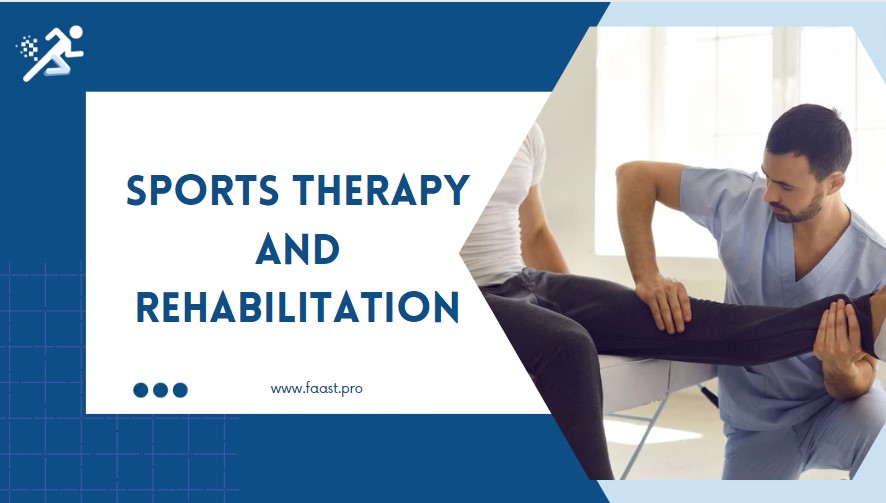Sports therapy and rehabilitation are closely related, as sports therapists often play a key role in helping athletes recover from injuries and return to their pre-injury level of performance.
Sports therapy rehabilitation typically involves a combination of manual therapy techniques, such as massage and joint mobilization, as well as exercise therapy and rehabilitation programs designed to improve strength, flexibility, and range of motion. Rehabilitation may also include the use of modalities such as ultrasound, electrical stimulation, and heat or cold therapy to reduce pain and inflammation.
Goal of sports therapy rehabilitation
The goal of sports therapy rehabilitation is to help athletes recover from injuries as quickly and safely as possible, while minimizing the risk of re-injury. Rehabilitation programs are tailored to the individual athlete’s needs, taking into account their injury, age, level of fitness, and goals.
In addition to helping athletes recover from injuries, sports therapy rehabilitation can also be used to prevent injuries from occurring in the first place. Sports therapists may work with athletes to develop training programs that help them build strength, improve flexibility, and reduce the risk of injury.
Overall, sports therapy rehabilitation is an important part of the recovery process for athletes, and can help them get back to their sport or activity as quickly and safely as possible.
Stages of Rehabilitation in Sports
The 5 stages of rehabilitation in sports are:
- Acute stage: This stage occurs immediately after the injury and lasts for several days. The focus is on reducing pain and inflammation, protecting the injured area, and promoting healing. This may involve rest, ice, compression, and elevation (RICE), as well as medications and other modalities to manage pain and inflammation.
- Sub-acute stage: This stage begins once the initial pain and inflammation have subsided, usually within a few days to a week after the injury. The focus is on restoring mobility, flexibility, and strength to the injured area. This may involve exercises, stretches, and manual therapy techniques to help the injured tissue heal and regain its normal function.
- Remodeling stage: This stage occurs once the injured tissue has healed to a certain degree, usually several weeks to a few months after the injury. The focus is on improving the strength, endurance, and function of the injured area through more advanced exercises and functional movements. This may involve exercises that mimic the specific movements and demands of the athlete’s sport or activity.
- Functional stage: This stage occurs once the athlete has regained the necessary strength, flexibility, and function to return to their sport or activity. The focus is on building the athlete’s confidence and skills through sport-specific training and drills, while still ensuring that the injured area is protected and supported as needed.
- Maintenance stage: This stage occurs once the athlete has returned to their sport or activity and is fully functional. The focus is on maintaining the gains made during the rehabilitation process, preventing future injuries, and optimizing the athlete’s performance through ongoing training and conditioning.
It’s important to note that these stages may overlap or vary depending on the specific injury, the athlete’s needs, and other factors. A sports therapist or healthcare provider can help guide an athlete through the appropriate stages of rehabilitation based on their individual situation.
Read More Content Related Sports Rehabilitation
The FAAST AI powered app helps prevent injury and track sports rehab progress
FAAST is a breakthrough in the world of movement analysis. The FAAST application enables real-time motion analysis and uses the Landing Error Scoring System (LESS) to give instant feedback with just a smartphone (no cumbersome wires, trackers or expensive devices). This proprietary algorithm provides an accurate assessment of landing accuracy and helps coaches target issues such as hip flexor flexibility and quad strength.


[…] Sports Rehabilitation plays a crucial role in helping athletes recover from injuries and return to peak performance. In the digital age, technology has become an invaluable tool for athletes and healthcare professionals alike. One such innovation is the Faast app, a cutting-edge platform designed to revolutionize Sports Rehabilitation. In this blog post, we will explore the features and benefits of the Faast app and how it can enhance the recovery journey for athletes in the UK. […]